When it comes to handpans, one of the most debated topics is the handpan 432 or 440 Hz tunings. You may have heard musicians, sound healers, or even casual listeners passionately discussing which frequency resonates better, but what exactly sets these two apart?
Choosing the right frequency for your handpan can significantly influence the sound and the emotional experience it creates. Whether you're looking for vibrant energy or calming harmony, understanding the nuances between 432 Hz and 440 Hz will guide you toward the perfect instrument for your practice.
In this blog, we'll dive into the differences between 432 Hz and 440 Hz handpans, explore their unique benefits, and help you decide which is best for your musical journey. Let’s explore this harmonic debate!
Handpan 432 or 440 Hz: Understanding These Tuning Frequencies
In music, tuning frequencies are more than technicalities—they form the foundation that gives each piece its distinctive sound. These frequencies, measured in Hertz (Hz), define pitch by counting the number of sound wave oscillations per second.
The Standard 440 Hz Tuning
A440, or 440 Hz, is the globally accepted standard for musical pitch, representing the note A above middle C. Most Western music adheres to this tuning system, ensuring that different instruments can harmonize harmoniously. Whether a handpan or violin, tuning to 440 Hz creates consistency across various instruments, allowing musicians to perform seamlessly together.
The Alternative 432 Hz Tuning
In contrast, 432 Hz is an alternative tuning that lowers the pitch slightly from the standard 440 Hz. Some believe this frequency aligns more naturally with the Earth's vibrations, specifically the "Schumann Resonance." People often describe music in 432 Hz as more soothing and harmonious, creating a calming listening experience that resonates with the world around us.
Why do Frequencies Matter?
Tuning frequencies shape how we perceive and experience music by influencing sound wave vibrations. These vibrations interact with the physical world, affecting how music resonates with the instrument and the listener. The difference in tuning can significantly impact the emotional experience a piece of music offers.
Here’s how different tunings affect the sound:
- 440 Hz Tuning: The global standard for musical pitch creates a consistent, harmonious experience across instruments and genres.
- 432 Hz Tuning: Believed to align more closely with natural vibrations and human emotions, offering a soothing effect.
Both frequencies play a key role in how music resonates with us emotionally and physically.
Are you curious which one you should choose, handpan 432 or 440 Hz? Let’s find it in the next section.
Which is Better for Handpan Music: 432 Hz or 440 Hz?
When playing the handpan, tuning is more than just a technical choice. It shapes how the instrument sounds, resonates, and emotionally connects with the player and listener. The two most common tunings are 440 Hz, the modern standard, and 432 Hz, a frequency believed to resonate more naturally with the body and environment.
Let’s explore how these frequencies differ in key areas such as sound, emotional impact, and potential healing properties.
1. Tuning Frequency
Tuning frequency refers to the pitch standard that instruments follow to ensure harmony when played together. The frequency is measured in Hertz (Hz), which calculates how many sound waves vibrate per second.
- 440 Hz: It is the globally accepted standard and has been widely used in Western music since the mid-20th century. This tuning ensures consistency across instruments so musicians can perform together seamlessly. It's the pitch most listeners are familiar with, making it ideal for traditional performances.
- 432 Hz: An alternative tuning, 432 Hz, is often called the "natural" or "healing" frequency. Some believe it aligns more closely with the Earth's natural rhythms and the human body. This tuning is frequently used for spiritual practices, meditation, and sound healing.
2. Sound and Resonance
Sound and resonance describe how the handpan’s tones travel through the air and how the player and audience feel them. The instrument’s resonance determines how long the notes sustain and how they interact with the surrounding space.
- 440 Hz: This tuning produces a sharper, more focused sound, which many associate with energy and alertness. It resonates in a way that creates a bright, vibrant tone that cuts through other sounds, making it perfect for performances that demand clarity and sharpness.
- 432 Hz: In contrast, 432 Hz offers a softer, warmer tone. The resonance from this tuning feels more enveloping and soothing, creating a serene and meditative atmosphere. The softer resonance makes it a popular choice for those who use the handpan in sound therapy, relaxation, or spiritual settings.
3. Emotional Impact
The emotional impact of sound frequencies can vary significantly. Some tunings evoke excitement or focus, while others promote calm and relaxation.
- 440 Hz: Often described as bright and energizing, the 440 Hz tuning stimulates both the mind and body. It can be mentally engaging and is often associated with increased focus and clarity, making it a preferred choice for high-energy musical settings.
- 432 Hz: On the other hand, 432 Hz is often perceived as more emotionally balanced and spiritually uplifting. Many handpan players and listeners describe the experience as calming. And some report a deeper emotional connection to the music. This frequency is especially favored for relaxation, emotional release, and therapeutic sound practices.
4. Healing and Spiritual Beliefs
Some sound frequencies are believed to have healing properties based on how they interact with the body’s natural energy systems, including chakras. Many sound healers include specific tunings to enhance the meditative and therapeutic experience.
- 440 Hz: While this is the standard for most music, it is not typically linked to healing or spiritual benefits. It serves more as a technical standard for ensuring uniformity across different instruments in a musical performance.
- 432 Hz: Many believe 432 Hz promotes harmony with the human body and the Earth’s natural frequencies, making it ideal for spiritual practices. Some suggest that this frequency can help relieve stress, enhance relaxation, and promote physical and emotional healing.
5. Personal Preference
Ultimately, handpan 432 or 440 Hz is a personal preference. Both tunings have their strengths, and players often choose based on the emotional response they want to evoke from their music.
- 440 Hz: Those who prefer a bright, energetic sound for traditional or modern performances often opt for 440 Hz. This tuning is familiar to most musicians and ensures a vibrant sound that cuts through in live settings.
- 432 Hz: 432 Hz is often the preferred choice for those looking for a more meditative, calming, or spiritual experience. Its warm and soothing tones make it ideal for those who want to use the handpan in sound healing or personal reflection.
Both handpan 432 Hz and 440 Hz tunings offer unique qualities catering to different musical experiences. If you're looking for vibrant and focused energy, 440 Hz is the standard. However, 432 Hz may be better for your handpan journey if you're drawn to a more calming, meditative tone.
Below is a tabular representation of the difference between handpan 432 and 440 Hz.
|
Aspect |
440 Hz |
432 Hz |
|
Tuning Frequency |
The modern standard in Western music. |
Often referred to as the "natural" or "healing" frequency, it is believed to align with the natural world. |
|
Sound and Resonance |
Produces a sharp, focused, and energetic tone. |
Creates a softer, warmer, and more soothing resonance. |
|
Emotional Impact |
Stimulates mental clarity and focus. |
Promotes emotional balance, calmness, and deeper relaxation. Spiritually uplifting. |
|
Healing and Spiritual Use |
Typically, it is not linked to healing. |
Promoting emotional and physical healing. |
|
Best For |
Traditional and modern musical performances. |
Sound healing, meditation, and spiritual practices. |
Final Note!
Ultimately, the choice between a handpan 432 Hz or 440 Hz comes down to personal preference and what resonates most with you. Both frequencies offer unique qualities, and understanding their differences can help you make the right decision for your musical journey and performances.
If you're unsure which tuning is best for you, Sound Artist Music and Handpan School supports you. Our experienced mentors and supportive community will provide the guidance you need to elevate your handpan practice.
Schedule your free 30-minute session today and confidently explore the handpan world!


